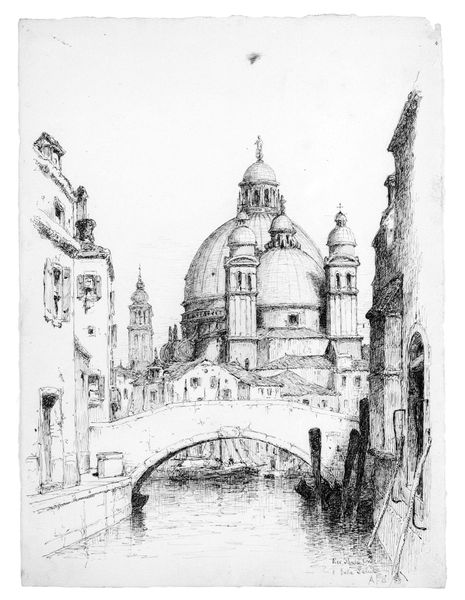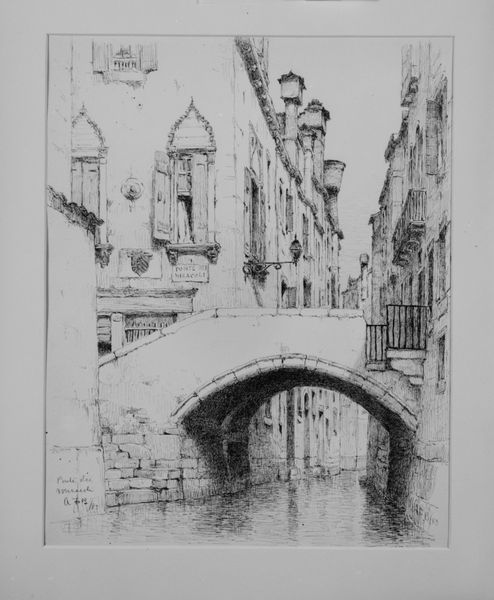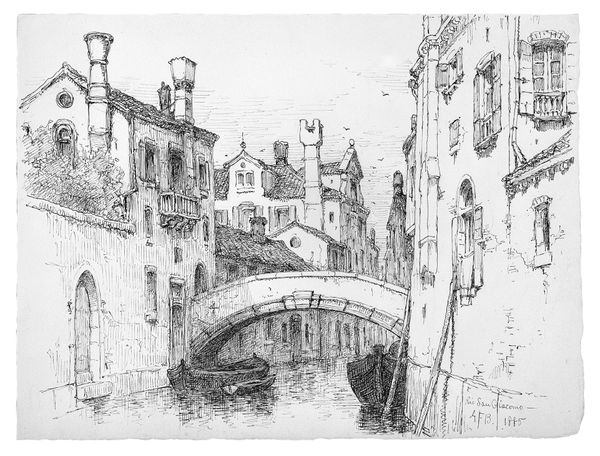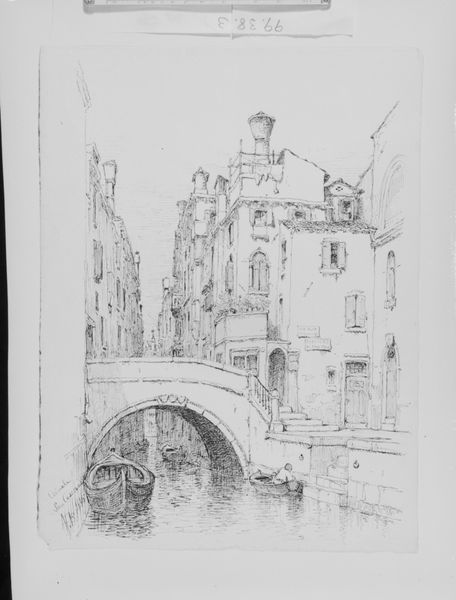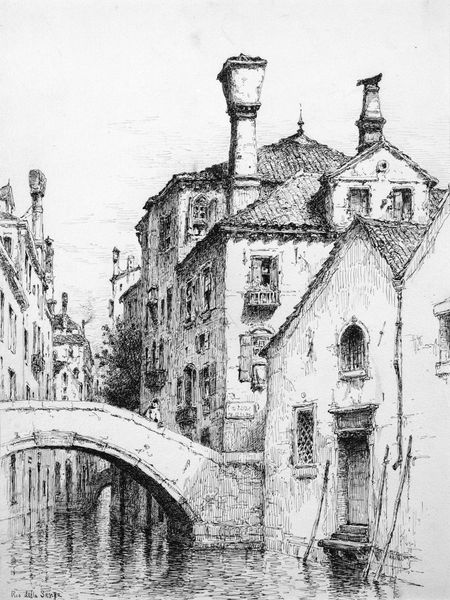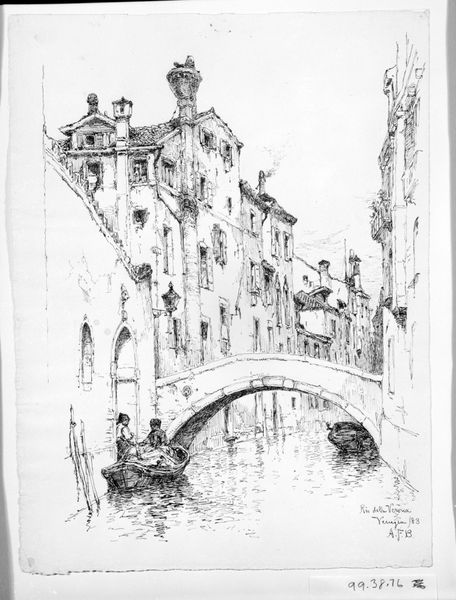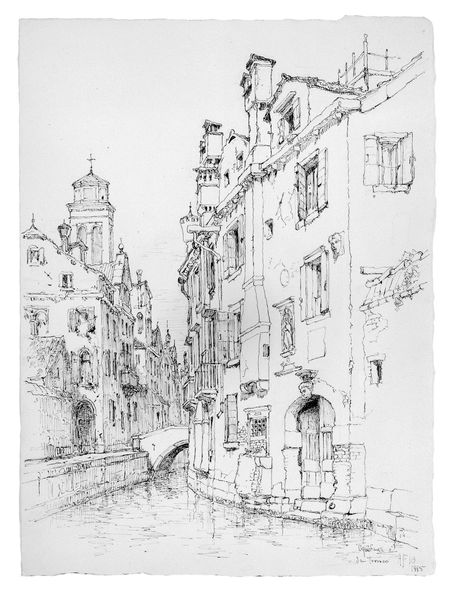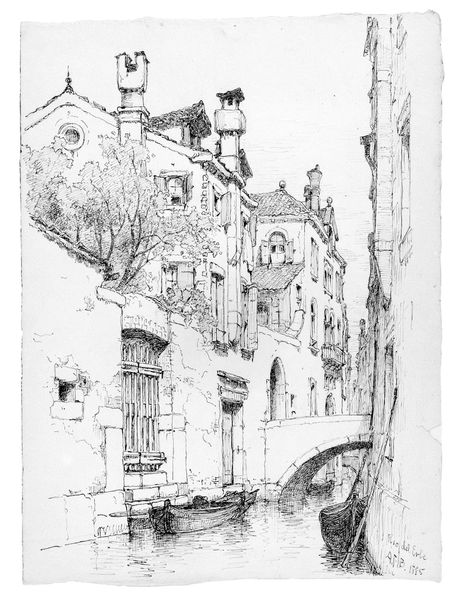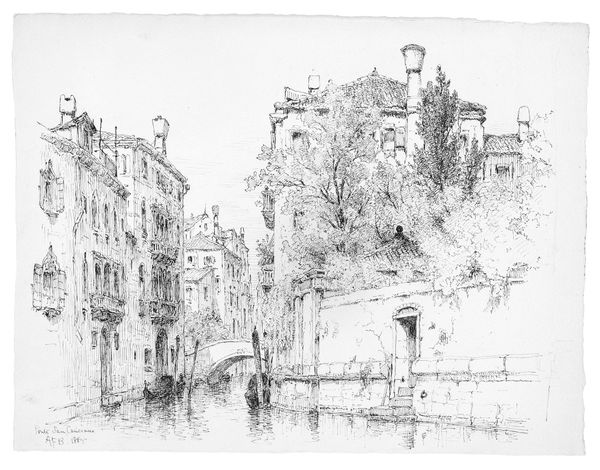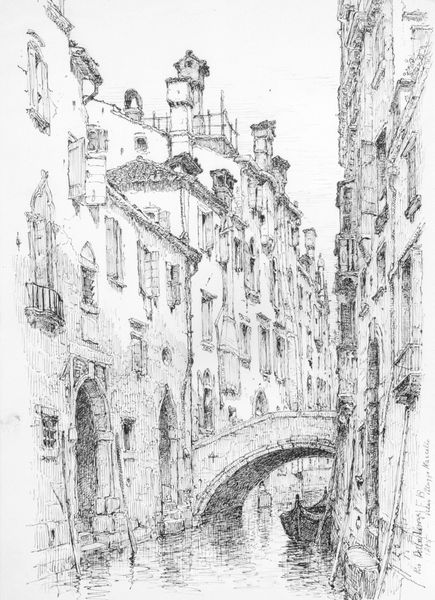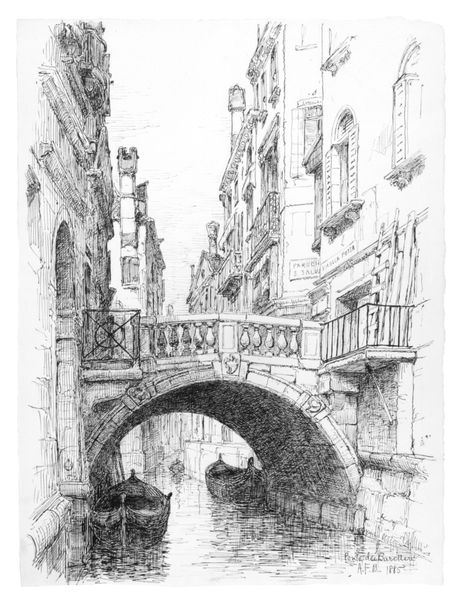
Rio della Fosca and Santa Fosca, Venice 1841 - 1897
0:00
0:00
Dimensions: 13 1/2 x 9 11/16 in. (33.2 x 24.6 cm)
Copyright: Public Domain
Andrew Fisher Bunner created this etching, Rio della Fosca and Santa Fosca, Venice, in the late nineteenth century. Bunner, like many artists of his time, was drawn to Venice for its picturesque qualities, yet his work also reflects the city's complex socio-economic realities. Bunner’s Venice is a space of layered histories, where the architecture embodies both grandeur and decay. The detailed rendering of the buildings and bridges speaks to the artist’s formal training, while the subtle shadows and reflections in the water evoke a sense of transience. This etching does not simply depict a place, but rather conveys an emotional landscape. How might the rapid industrialization of Europe and America, far from this scene, have impacted Bunner’s artistic sensibilities? The romanticized vision of Venice can be understood as a retreat, a yearning for a past untouched by modernity. Consider Bunner’s position as an American artist representing a European city. His gaze is both admiring and detached, capturing the beauty of Venice while maintaining a critical distance. This artwork encourages us to reflect on the cultural exchanges and power dynamics inherent in the act of representation, and reminds us that seeing is never a neutral activity.
Comments
No comments
Be the first to comment and join the conversation on the ultimate creative platform.
